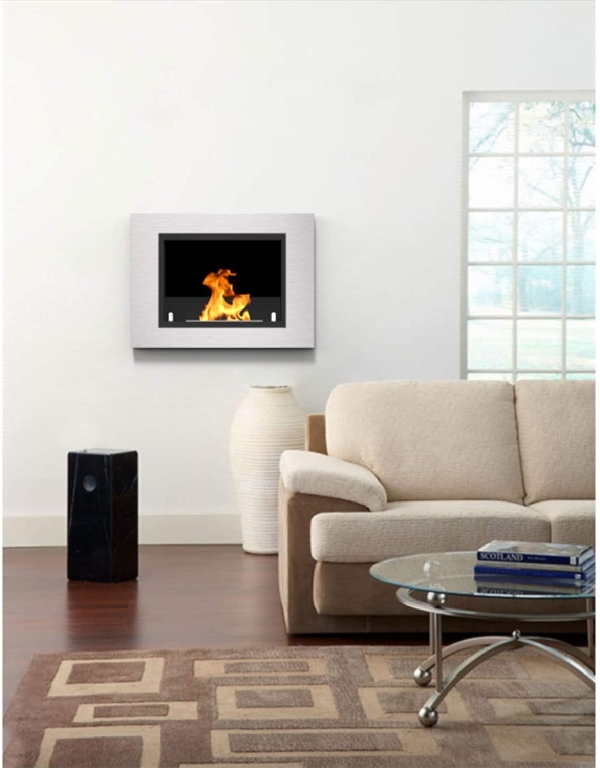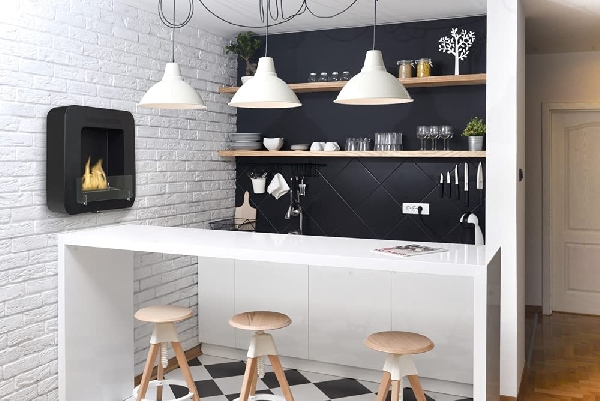You may have recently purchased a bioethanol fireplace, in which case you might find yourself wondering just how safe an ethanol fireplace fuel actually is. The word “bio” is in it and, sure, it is made from things like fermented vegetables, but you still can’t help but wonder if it is actually safe.
Thankfully, bioethanol fuel is actually one of the safest and most secure options that there is for fuel. Sure, you can’t drink it or rub it on your skin, but it is one of the safest options to choose from when it comes to burning, so long as you buy it from a manufacturer that is reputable.
Unlike fuel from traditional wood burning fireplaces, ethanol fireplaces doesn’t have any carbon monoxide, pollutants, or any other impurities that things like gas, wood, and other resources of fuel might release when they are burned. Getting warmth and environmental responsibility out of a product is a great way to go.
WHAT IS BIO ETHANOL FUEL?
The term bio-ethanol (which is typically shortened down to ethanol) is made up of fermented vegetables using the enzymes that are added to covert the sugar that they have into alcohol. Of the vegetables that are generally used, the most common are derived from things like corn, wheat, sugar beets, sugar cane, molasses, as well as any sugar or starch from which an alcoholic beverage (like whiskey) can be made (think fruit waste or potatoes).
Though the entire process of making that ethanol is pretty close to the one for creating alcoholic drinks like whiskey, vodka, and other liquors, there are differences due to the fact that the bio-ethanol fuel has to be distilled and then dried first.

The distillation process takes up a lot of energy as well as heat in order to make the process work. There are some manufacturers that rely on natural resources that tend to emit fossil fuels, but there are many others that are taking the necessary steps to reduce their carbon footprint and “go green”.
For example, in Brazil, they will commonly extract the juices of the beetroot and covert those sugars to the alcohol needed. They then press out all of the juice that is left in the beetroot and use it to burn so that they can create the necessary heat to distill the liquid into bioethanol fuel.
There are also a ton of manufacturers in Europe that are taking the necessary steps to end waste completely by using the byproducts of these vegetables that are fermented while also using pellets, wood chips, and so on instead of those aforementioned sources of fuel that require fossil fuel.
HOW SAFE IS SAFE WITH BIOETHANOL FUEL?
Because the process involves burning fuel in your home, you likely still have some concerns about the safety of bioethanol fuel sources. For instance, you want to make sure that there isn’t bio ethanol fireplace carbon monoxide or that the “smoke” that is emitted can be breathed in safely, especially for those with asthma.
In general, there are only two things that you need to concern yourself with when it comes to bioethanol fuel: the physical danger presented by fire and coming into contact with that fuel, especially when it comes to your eyes. Simply put, these are your only two problems so long as you are buying ethanol from a quality and reputable manufacturer.

The safest bet is to buy from ethanol fireplace manufacturers that sold you the modern ethanol fireplace. After all, if you can trust that product, you likely can trust the fuel source that they provide as well. This way, you get the peace of mind that you need to know that your home and family are safe when using this fuel source.
As a matter of fact, using ethanol blended fuels is one of the vital tools in the fight against global warming and climate change. These ethanol blended fuels can help to significantly reduce the greenhouse gas emissions that we generate over our lifecycle according to Biofuels Association of Australia.
The NGA has also stated that just one liter of ethanol reduces net emissions of CO2 by a whopping 99%, which will save approximately 2.3kg of CO2. That is an incredible decrease of the CO2 emissions.
That means that the carbon dioxide that is released by portable ethanol fireplaces is so minimal that there is no need for concern. In fact, the only three things that a bioethanol fuel fireplace produces are water, heat, and carbon dioxide unlike wood burning stoves. And since the latter has no trace amount of emissions, that means they are of no harm to your home or family.
What you might also not realize is that ethanol burning fireplaces have been found to be far safer than their woodburning counterparts. This is because the emissions from the wood burning stove have been connected to vicious diseases like cancer.
When you trade out for ethanol fireplaces, you eliminate that risk because there are no particles produced at all and air quality is still safe for you and your family. This makes your home infinitely safer than ever before even though you have fuel burning in your home.
FEEL AT EASE BURNING ETHANOL
Burning ethanol fuel in your home is completely safe so long as you use a bit of common sense where fire is concerned. As for the emissions, they are so safe, especially compared to your standard gas burning and woodburning fireplaces that the difference cannot be understated. With no smoke or particles being emitted, as well as trace amounts of carbon dioxide, there is no threat to your family or your home.
As stated, use caution with fire because as much as we would like to, fire is simply too volatile to control fully. That means that you have to exercise some caution and common sense because there is physical fire in your home and that can be dangerous to your home if it is handled carelessly.
But overall, bioethanol fuels are the safest way to create fire in your home that will burn long and cut the emissions down to nothing at all.

